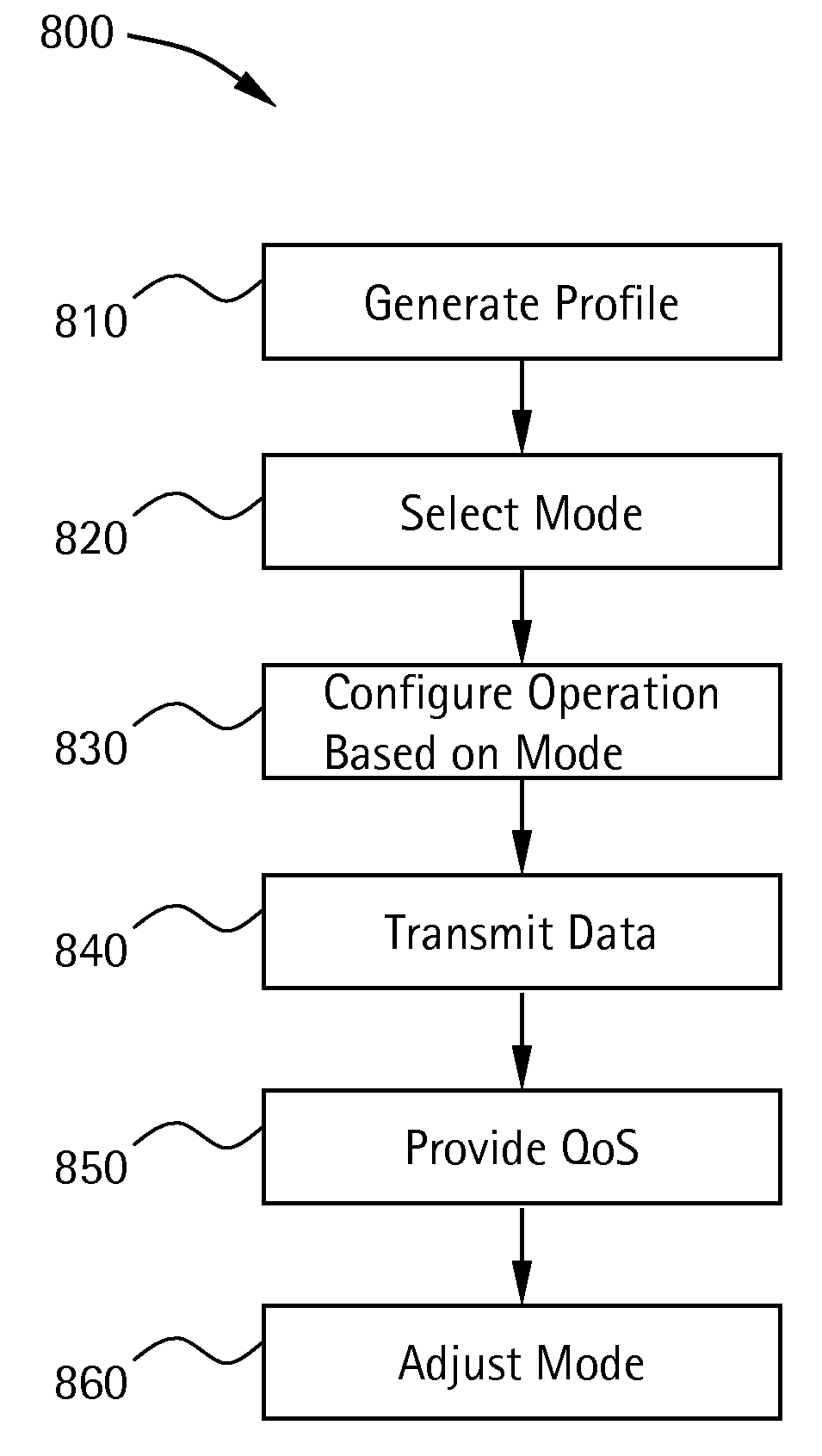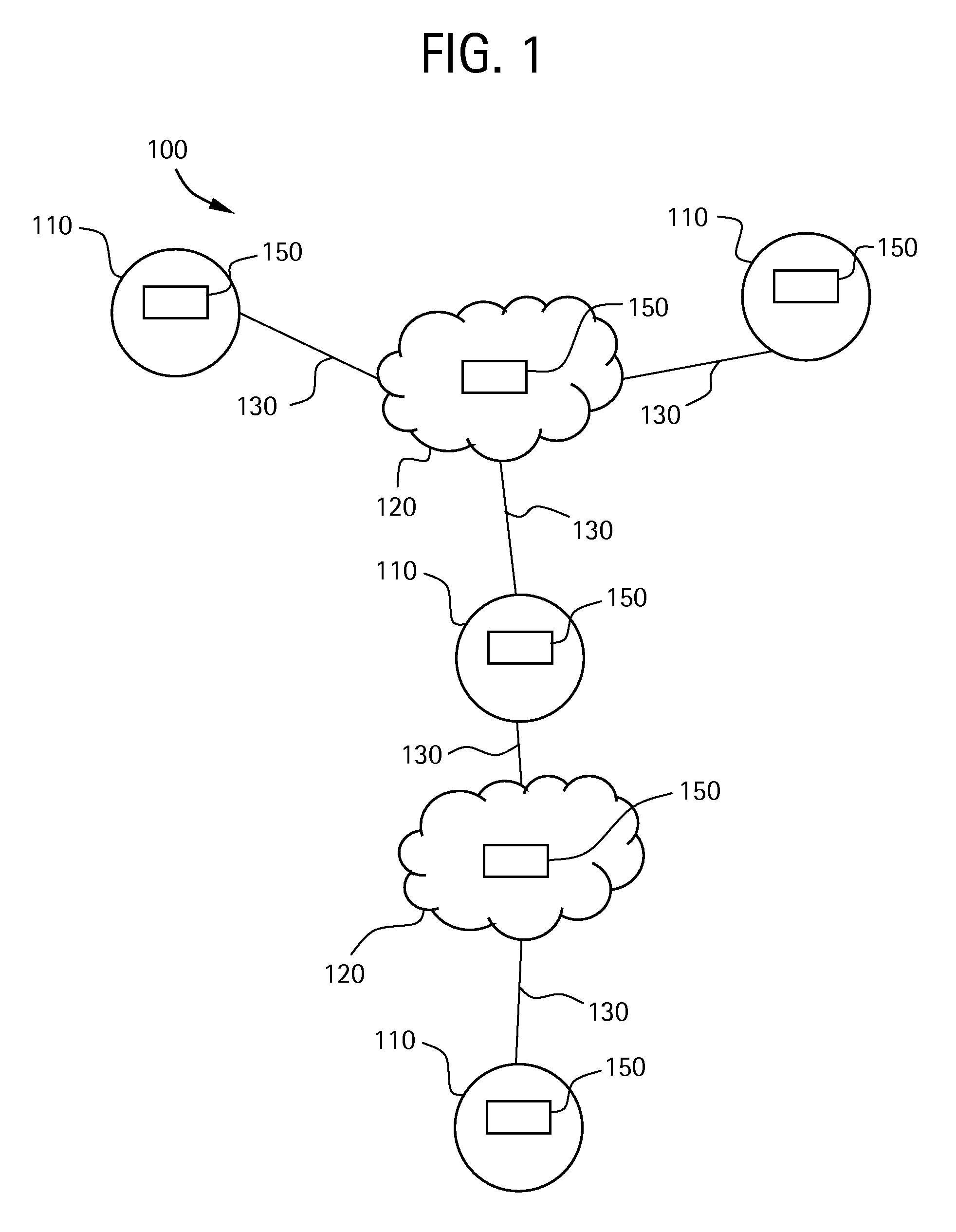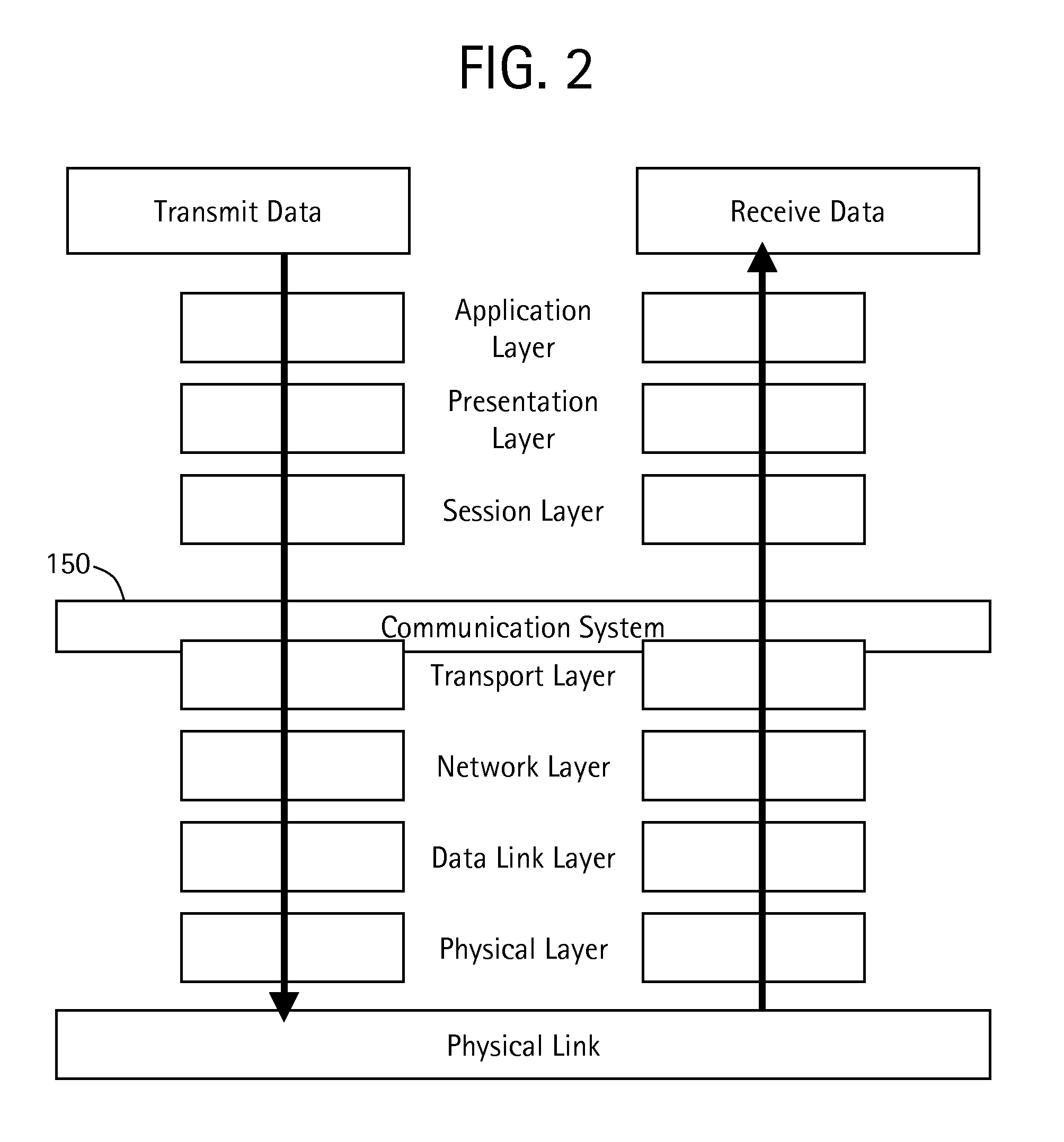Systems and methods for dynamic mode-driven link management
a dynamic mode and link management technology, applied in the field of communication networks, can solve the problems of inability to increase the bandwidth available to the network, overly complex network addressing schemes and routing tables, and additional delays in the network
- Summary
- Abstract
- Description
- Claims
- Application Information
AI Technical Summary
Benefits of technology
Problems solved by technology
Method used
Image
Examples
Embodiment Construction
[0041]FIG. 1 illustrates a tactical communications network environment 100 operating with an embodiment of the presently described technology. The network environment 100 includes a plurality of communication nodes 110, one or more networks 120, one or more links 130 connecting the nodes and network(s), and one or more communication systems 150 facilitating communication over the components of the network environment 100. The following discussion assumes a network environment 100 including more than one network 120 and more than one link 130, but it should be understood that other environments are possible and anticipated.
[0042]Communication nodes 110 may be and / or include radios, transmitters, satellites, receivers, workstations, servers, and / or other computing or processing devices, for example. Network(s) 120 may be hardware and / or software for transmitting data between nodes 110, for example. Network(s) 120 may include one or more nodes 110, for example. Link(s) 130 may be wired...
PUM
 Login to View More
Login to View More Abstract
Description
Claims
Application Information
 Login to View More
Login to View More - R&D
- Intellectual Property
- Life Sciences
- Materials
- Tech Scout
- Unparalleled Data Quality
- Higher Quality Content
- 60% Fewer Hallucinations
Browse by: Latest US Patents, China's latest patents, Technical Efficacy Thesaurus, Application Domain, Technology Topic, Popular Technical Reports.
© 2025 PatSnap. All rights reserved.Legal|Privacy policy|Modern Slavery Act Transparency Statement|Sitemap|About US| Contact US: help@patsnap.com



